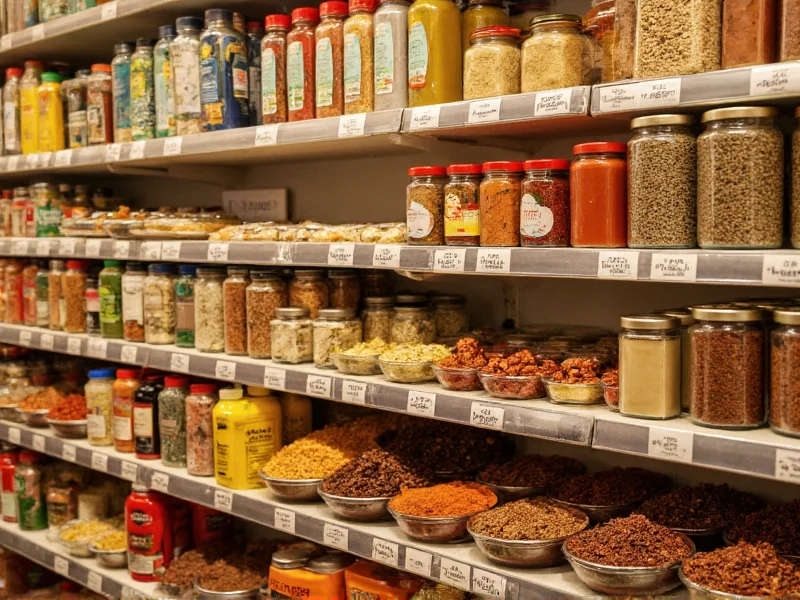Understanding spice shelf life is essential for maintaining culinary quality in your kitchen. While spices won't make you sick when past their prime, they lose their aromatic compounds and flavor intensity over time. This comprehensive guide explains exactly how long different spices remain at their peak, how to identify when they've lost potency, and professional storage techniques to maximize their shelf life.
What "Expiration" Really Means for Spices
Unlike dairy or meat products, spices don't have true expiration dates that indicate safety concerns. The dates printed on spice containers typically represent "best by" or "use by" recommendations for optimal flavor, not food safety deadlines. Most commercially packaged spices include a date that indicates when the manufacturer believes the product will begin to lose significant flavor.
When spices "expire," they don't become dangerous to consume—they simply become less potent. This distinction is crucial for home cooks who might unnecessarily discard still-usable spices. The primary concern with old spices is diminished culinary performance, not health risks.
Spice Shelf Life Reference Guide
The shelf life of spices varies significantly based on whether they're ground or whole, their chemical composition, and storage conditions. Here's a detailed reference for common spices:
| Spice Type | Whole Form Shelf Life | Ground Form Shelf Life | Flavor Degradation Signs |
|---|---|---|---|
| Cinnamon | 4 years | 2-3 years | Faint aroma, dull color |
| Cumin | 4 years | 2-3 years | Loss of earthy scent |
| Paprika | — | 1-2 years | Faded red color, flat taste |
| Black Pepper | 5+ years | 2-3 years | Mild heat, weak aroma |
| Nutmeg | 4-5 years (whole nut) | 2 years | Minimal fragrance when grated |
| Chili Powder | — | 1-2 years | Reduced heat, dull flavor |
| Curry Powder | — | 1-2 years | Weak complex flavor |
| Vanilla Extract | — | 4+ years (pure extract) | Weakened vanilla aroma |
How to Determine If Your Spices Have Lost Potency
Professional chefs use several reliable methods to assess spice freshness beyond checking dates. The most effective spice freshness test methods include:
- The Scent Test: Crush a small amount in your palm and smell it. Fresh spices should release a strong, distinctive aroma. If you need to inhale deeply to detect any scent, the spice has significantly degraded.
- The Taste Test: For non-potent spices like cinnamon or paprika, a small taste reveals flatness. Properly stored fresh spices deliver immediate flavor impact.
- The Color Check: Vibrant colors indicate freshness. Faded hues, particularly in paprika and turmeric, signal flavor loss.
- The Texture Assessment: Clumping or moisture indicates improper storage that accelerates degradation.
Understanding spice expiration dates means recognizing that these indicators matter more than printed dates, especially if you've transferred spices to different containers.
Professional Storage Techniques for Maximum Shelf Life
Proper storage dramatically extends how long spices last before expiration. Follow these evidence-based storage recommendations:
- Airtight containers: Transfer spices from flimsy store packaging to glass or opaque containers with tight seals. This prevents moisture absorption and flavor escape.
- Cool, dark location: Store spices away from heat sources like stoves and direct sunlight, which accelerate flavor compound breakdown.
- Minimal air exposure: Only open containers briefly during use. Oxygen exposure degrades volatile oils responsible for flavor.
- No refrigerator storage: Contrary to popular belief, refrigeration introduces moisture that clumps spices and accelerates degradation.
- Buy in small quantities: Purchase whole spices in amounts you'll use within 6-12 months for peak freshness.
The best way to store spices long term involves keeping whole spices whenever possible, as their essential oils remain protected within the seed or fruit structure. Grinding spices just before use delivers dramatically superior flavor compared to pre-ground alternatives.
When to Replace Your Spices
Knowing when to replace old spices saves money while ensuring culinary excellence. Consider replacing spices when:
- You can't detect a strong aroma after crushing a small amount
- Dishes consistently lack depth of flavor despite using recommended amounts
- Spices have been stored for longer than the maximum shelf life guidelines
- You notice visible moisture or clumping (indicating compromised quality)
For critical dishes where spice flavor is central (like spice rubs or curry blends), err on the side of freshness. The difference between vibrant, fresh spices and degraded ones can make or break complex flavor profiles.
Common Misconceptions About Spice Shelf Life
Several myths persist about spice expiration that lead to unnecessary waste or subpar cooking results:
- Misconception: Expired spices will make you sick
Reality: Properly stored dried spices pose virtually no health risks when past their prime—only flavor loss occurs - Misconception: All spices expire at the same rate
Reality: Whole spices like peppercorns last significantly longer than ground versions of the same spice - Misconception: Freezing extends spice shelf life
Reality: Temperature fluctuations during freezing/thawing introduce moisture that damages spice quality - Misconception: The "best by" date is the definitive expiration
Reality: Properly stored spices often remain usable beyond printed dates, while poorly stored ones degrade faster
Understanding these distinctions helps you make informed decisions about your spice collection rather than following arbitrary timelines.
Maximizing Value From Your Spice Investment
To get the most from your spices while maintaining optimal flavor, implement these practical strategies:
- Label containers with purchase dates to track shelf life
- Store spices away from the stove—heat reduces shelf life by up to 50%
- Buy whole spices and grind them as needed using a dedicated spice grinder
- Keep spices in opaque containers to protect light-sensitive compounds
- Revive slightly stale spices by toasting them briefly in a dry pan
Implementing these best practices for dried spices ensures you consistently achieve restaurant-quality results at home while minimizing waste. The difference between fresh and degraded spices becomes particularly apparent in dishes where spices play a starring role rather than a supporting one.











 浙公网安备
33010002000092号
浙公网安备
33010002000092号 浙B2-20120091-4
浙B2-20120091-4